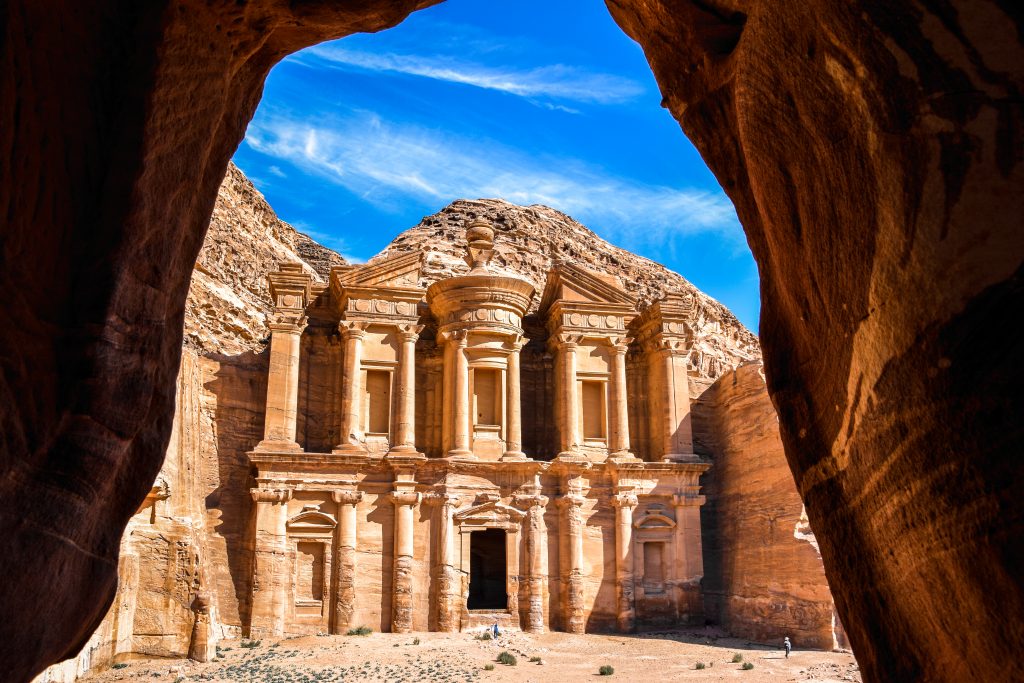
The magnificent Hagia Sophia mosque in Turkey. The ancient city of Petra in Jordan. The timeless pyramids of Giza in Egypt. These wonders of the ancient world, dating back thousands of years, may ring a bell for those interested in the history of the Middle East. But how many of us have actually visited these sites in person, experienced the ancient arts, culture and architecture of a society so different from the Western norms we are so used to today? Probably not many. While the Middle East today can be an enriching region to visit and study in, recent history has left a dark stain on the area’s reputation.
A distorted media image of the Arab people has been becoming ingrained in American culture since the 1980s, and continues to not only inhibit a resolution of the Middle East conflict, but create a false perception of Arab culture and society in the minds of Westerners. Following the Iranian Revolution in 1979, the Persian Gulf War in the ’90s and the Iraq War in the 2000s, seemingly harmless forms of entertainment such as television programs and social media platforms have promoted an image that portrays the Middle East as a region solely and perpetually plagued with terrorism, warfare and danger. As a result of the Arab Spring in the early 2010s, a region-wide revolutionary movement meant to oust tyrannical governments, tourism in the Middle East had dropped dramatically. This is especially alarming for many nations in the area, especially Egypt, because they have been highly dependent upon their tourism industry for generations, and are especially stable and safe today. There were only four terror attacks in Egypt in 2018, which may seem frightening until you consider the 65 that occurred in the United States in 2017.
The number of tourists visiting Egypt fell from 14.7 million to 5.4 million in 2016, according to the United Nations World Tourism Organization, costing the country billions in lost revenue. Steven Cook, a senior fellow for Middle Eastern studies at the Council of Foreign Relations, said, “It’s pretty dead … In 2010, the country welcomed something like 15 million foreign tourists. They haven’t even come close to that since. It’s unfortunate.”
While concentrated incidents of conflict do exist today in the Middle East, such as in Yemen, there are countless nations that remain untouched by warfare and are feeling the effects of tourism negligence. According to travel journalist Kevin Rushby, all across the region, in areas lacking any sort of violence, “one can see empty hotels, lines of concrete boxes standing close to beaches, beauty spots and ancient cities.” One visitor to Petra in Jordan mentioned that he was the only one there. Another returnee from Sinai, after the Russian Airbus bomb, mentioned driving past unfinished hotels while traveling between resorts. Rushby asked why they were left like this and the taxi driver’s answer was sad, yet simple: “No tourists.”
While the 2010s have been marked with notions of terror, conflict and crisis, the turn of the decade is showing signs of hope for the Middle East. Middle Eastern tourist arrivals increased by 10 percent to 64 million in the past year, and northern Africa has registered a 10-percent growth in visitors staying at least overnight. Perhaps President Donald Trump’s political rhetoric regarding Islam and state-sponsored travel bans has drawn positive attention onto nations of the Middle East, or perhaps the ominous connotation recently associated with the Middle East poses the area as a unique travel destination suited for explorers and adventure-seekers alike.
Regardless of the circumstances, the Middle East today is without a doubt a hidden gem for tourists, with an abundance of food, culture, customs and traditions not found anywhere else on Earth. The Arabic language is one of the most beautiful and widely spoken languages on Earth, and the Arab people are responsible for a variety of scientific innovations, such as the invention of algebra, the modern clock and a plethora of surgical instruments and techniques developed in the 10th century.
Out of the 65 study abroad programs (not including SUNY-wide programs) Binghamton University offers to its students, only a few involved travel to countries in the Middle East. While traveling to France could perhaps help you learn a few more French phrases and traveling to London could get you that photo you wanted with Big Ben, none of these trips would compare to a trip to the Middle East. Whether it be Morocco, Israel or Turkey, traveling to any of these destinations to study would provide students with a unique perspective not available when traveling to a Western country, forever changing the way students think about culture, politics and history.
BU students should strive to take advantage of any opportunity presented to them regarding their understanding of the Middle East. Traveling to Europe, while exceptional, only provides an insight on different variations of Western culture and tradition. A whole new world of artistic, philosophical, literary and political themes and traditions can be found in the Middle East, where many cultural mainstays have remained unchanged for centuries. Hopefully, as a result of more widespread travel to this sacred region, a better understanding of the Middle East will bloom in the minds of young travelers and students alike.
David Hatami is a sophomore majoring in political science.



